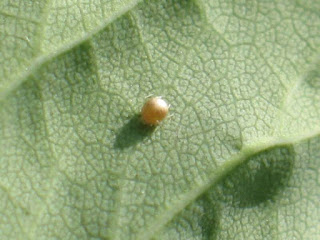- Resource efficient
- Air pollution reduced
- Replenishes soils
- Reduced in/outflows
- Conserves forest products
- Less volume to City/County programs
Saturday, November 1, 2008
MULCH-ON-SITE
During leaf season instead of raking up leaves, bagging them, and/or taking them out to the curb or worse burning them try Mulching-on-Site! Let annual leaf drop stay in the landscape in a beautiful way to promote healthy and seasonally replenished soils!
Monday, September 1, 2008
SHEET MULCHING
Do you want more garden space without the hassle? TRY SHEET MULCHING!!!
Sheet mulching is a method for turf eradication and also for building soil health on weedy or infertile ground.
By
simply placing out overlapping sheets of clean cardboard, adding 4-6
inches of compost and a final layer of arbor mulch one can easily
renovate a lawn into a functional and fertile garden space.
Friday, August 1, 2008
DID YOU KNOW?
Lyme
disease is caused by a bacterium which lives in the belly of ticks,
such as the western black-legged tick here in California. When a
juvenile tick (about 1/20th of an inch in size) ingests the blood a
Western Fence Lizard a protein in the lizards’ blood actually kill the
bacteria! This seems to leave the tick unable to transmit Lyme
Disease!
WAY TO GO MOTHER NATURE!!
Tuesday, July 1, 2008
TO WEED OR NOT TO WEED… that is the question!
What
is a weed? "A plant out of place" is the answer given by most
horticulture folks. But what is a weed in the eyes of an ecological
landscape?
Only
three of the four plants shown below are what we consider to be
invasive and should be managed well in the landscape. Their escape can
be time consuming the long run.
Can you guess which plant is not a weed to the eyes of an ecological landscaper?
Sunday, June 1, 2008
BEETLES ABOUND!
The
enormous amount of carrot seed we have collected since we first saw
these beetles a few years ago has been wonderful. We collect the seed
and they finish drying outdoors then are stored in a cool dry place.
These particular carrots produced viable and abundant seed thanks to the
pollination from these beetles and others.
Thursday, May 1, 2008
BENEFICIAL INSECTS
Planting
insectary plants into the garden will bring these predators and
pollinators to your gardens. Eliminating pesticides and harmful
chemicals is also necessary.
 |
| soldier beetle |
 |
| hoverfly |
 |
| ladybug |
 |
| aphid mummy caused by parasitic wasp |
 |
| crab spider |
 |
| garden spider |
 |
| butterfly |
 |
| lacewing eggs |
 |
| ladybug eggs next to aphids |
 |
| ladybug larvae |
 |
| ladybug |
Subscribe to:
Posts (Atom)



























